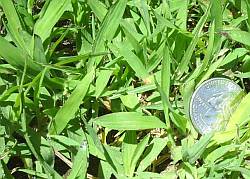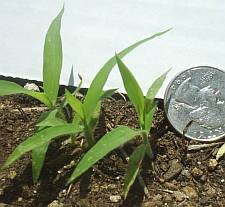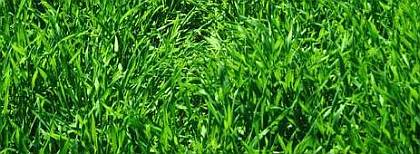WHEN TO APPLY
CRABGRASS PREVENTER
What If You Miss The Best Time
To Use Pre-Emergent Herbicides?
Are you not sure when to apply crabgrass preventer? Conventional wisdom says you must apply pre-emergents prior to, or early in, the growing season. Obviously, the start of crab grass hunting season will vary, depending on where you live.
The problem always develops that many people do not get it done when the best time arrives. Is that the end of the story? Can you effectively apply preemergent at other times?
Would you consider 50% success in preventing crabgrass a victory of sorts? Asked another way, would you feel better/worse about a lawn completely filled with crabgrass, or a lawn only half affected?
The most practical answer to ‘when to apply crabgrass preventer’ might be ‘whenever you have the time, money, and willingness to do it!’ Let’s discuss why that makes sense.
FTC Disclosure:
If you make a purchase via a link on this site, I may receive a small commission on the transaction - at no added cost to you.
Sponsored Links

When To Apply Crabgrass Preventer
For Early and Best Control
Crabgrass seeds can germinate each year when nighttime soil temperatures reach over 50 degrees for 3 days. This “wakes up” the seed, and starts it on its process of growing up to be your worst nightmare.
Note, the seed “can” germinate at that point. So common thinking is to have the preemergent applied no later than this. That could mean a December/January application in Southern California, but April in Ohio.
So you might diligently observe soil temperatures, either through your own monitoring, or a local source. Perhaps the newspaper in your area provides such information, or the county agricultural department.
State universities may provide this information on a website as a guideline for when to apply crabgrass preventer and other products. You might find it useful for this and other garden projects to have a Soil Thermometer on hand.
But, how much of the current crabgrass seed lurking in your yard will germinate this early?
The earlier that you apply the preemergent, the sooner it will lose effectiveness. The duration of effective control depends on the type of product, and how heavy of a concentration you apply.
The control could last 2 to 3 months, or longer than 4 months, depending on several factors. So the date chosen as when to apply crabgrass preventer could determine if you need to do it one or two additional times.

Is Early Application The Best Time
Or The Only Time?
Crabgrass seed doesn’t line up at the germination window like holiday shoppers do at stores on the morning after Thanksgiving. Some are late sleepers.
Researchers at the University of Maryland determined that the minimum daytime soil temperature to observe the initial emergence of crabgrass was 54 degrees.
The major emergence of crabgrass, however, did not appear until soil temperatures were at least in the range of 60 to 70 degrees.
This explains something that you have probably observed. There seems to be no end to the appearance of new crabgrass throughout the warm months of the year. Individual seed specimens will vary by size, maturity, and depth in the ground, as to when they are ready to germinate.
Soil temperatures will vary throughout your yard. How much is the soil shaded during the day? The thickness and height of your grass can affect this. So can trees, shrubs and buildings nearby, as well as cloudy days. The amount of moisture present, wind, and more, can also affect temperatures.
The end result is, these pesky weeds will pop up consistently over an extremely long growing season. Will the late bloomers be met with preemergent, or will it have worn off already? So there really is not one small window that is fitting for when to apply crabgrass preventer.
What if you miss the early date for applying the preemergent? You watch crabgrass sprouting for a month because you don‘t have a chance to get to yard chores. Does that doom you to allowing the remaining seeds to have their way the rest of the growing season? Certainly not!
Take the necessary steps to kill crabgrass plants that showed up early. But why not be in control for the rest of the season? Don’t despair because of what all the experts say about the limitations of when to apply crabgrass preventer. Get it down as soon as possible, yes. Get it down as late as possible also.
The only thing you have working against you is that most preemergents will lose their effectiveness in extreme heat, when temperatures get over 90 degrees. By this time most of the weeds will have sprouted anyways. But a single short heat wave may not fit that condition.
You may have a chance to reduce the crabgrass population by 50 percent or even by just one-third, with a late application. That could translate into less trouble trying to kill mature weeds later on, and especially next year. Let the answer to 'when to apply crabgrass preventer' be mindful of next year's benefits as well as providing some help this season.
A Visual Clue For Crabgrass Preventer Timing
Many of you won’t bother trying to watch for rising soil temperatures. We all have too much to keep track of without worrying about crabgrass birthdays!
Look at this VALUABLE TIP on when to apply crabgrass preventer:
EYES DOWN: Watch for weeds sprouting along the edges of concrete. The soil temperature will rise more quickly next to sidewalks, patios, brick edging, and driveways, These materials absorb heat from the sun and transfer it to the soil adjacent to them.
Crabgrass seeds frequently get lodged in these border areas, and they are often the earliest of the weeds to sprout. When you see these bright green seedlings, you have entered the season. Now is your best time for complete control of crabgrass using preemergents.
Crabgrass Seedlings

If you take advantage of this early clue, you can jump on it and get the majority of the coming crabgrass crop knocked down with your chosen killer product.
But maybe you cannot. Here's a good thing to know about selecting a pre-emergent. One product also acts as a post-emergent killer of crabgrass until it grows past the four leaf stage. So even those early “scouts” can be wiped out within a few weeks of growth.
“DIMENSION” is the trade-name of a preemergent that works this way. It is found as a granular or liquid concentrate product that is spread over a lawn area and then watered in thoroughly to activate it. The active ingredient is Dithiopyr.
Few companies provide the pre-emergent alone, as most want to sell you a combination product with fertilizer. They make it sound like they're doing you a favor by helping you do two things at once. In reality, they want to sell twice as much product. Stick to one project at a time and you'll be better off, in my experience. Often the timing is wrong for fertilizer in this case.
The point of mentioning this is not meant to suggest you ought to wait until you see the sprouts, and then hit it hard with "Dimension'. You'll always get more thorough control if you get it down earlier. But being late doesn't mean being sorry in this case.
I regularly check the big box stores, and the big A, and they are hit or miss with offering the product, at all or in stock when you need it.
So I recommend as a reliable and customer-friendly source: DoMyOwn, as in Pest Control. I order products for my own use and vouch for the quality and service.
DMO offers several choices for the Dithiopyr pre-emergent. The best homeowner versions are:
Hi-Yield Turf & Ornamental Weed and Grass Stopper with Dimension
Bonide Crabgrass & Weed Preventer
To The Starting Blocks…
Chances are, whatever month of the year you read this article, you have a crabgrass enemy in some stage of preparation for making your life miserable.
Come up with a battle plan, and be ready to fight back. It is always more difficult getting things under control, than maintaining it. Decide what approach makes sense in your situation, than go for it.
If Shakespeare had been a gardener, talking about when to apply
crabgrass preventer, he might have said: “It is better to apply it late,
than never to apply it at all”!
A FINAL NOTE: These opinions specifically apply to crabgrass and
not to other types of garden weeds. Most weeds have a short cycle and
time period in which you can interrupt them. Crabgrass is quite unique.
Learn more about this nuisance at Getting Rid Of Crabgrass.
Check out this User's Guide to Lawn PreEmergents to understand the basics about Weed Preventers. As with any chemical product, what you don't know can disappoint or cause bigger problems!
EDITOR'S NOTE:
Update: ORGANIC PRE-EMERGENT for Lawns
Many viewers have shared a reluctance to use any type of chemical herbicides in their yards. Some are concerned for children or pets being exposed, others have a desire to avoid the impact on the environment. They were under the impression that this meant that using a weed or crabgrass preventer, the most effective means of controlling weeds in a lawn, was unavailable to them.
In fact, there does exist an organic pre-emergent, and it has been available for quite a few years, enough to be proven quite effective. The only down-side to this product, which is a specialized form of corn gluten meal, is that it has a shorter effective period and is more expensive for the coverage you get. For those who can absorb those negatives, this is an ideal solution.
I regret I haven't yet published a full-length article on this topic, though I have been recommending it to a number of people who have written in for individual advice. I hope to accomplish that soon, but until then I want to acknowledge to my readers that the corn gluten weed preventer is definitely a viable option.
Some people do report a lack of success with this safer product, and there are a couple of likely reasons that apply to that.
(1) Use only the commercial packaged corn gluten, because it is
processed differently from the cheaper variety some might find at a
local feed store. The commercial brand has a higher protein content
which is one of the factors involved in stopping the growth of the weed
sprouts.
(2) Even though this weed preventer, like all of them, must be
watered into the top level of soil to be effective, the corn gluten is
more susceptible to over-watering. So if you apply it and then
experience a couple of weeks of substantial rainfall, the product will
become too diluted or washed through the soil beyond the developing
roots of the young weeds. Hopefully you'll be able to find an acceptable
weather pattern to get it applied when it will do the greatest good for
you.
If you avoid these two factors, and apply this organic product according to label directions, you will be successful. "Concern" is a product line that was one of the first to package this weed and crabgrass preventer. They offer several sizes, but the largest, a 25 pound bag, Concern 97185 Weed Prevention Plus for Lawn Care is the most economical. It makes the most sense even for those with less than the 2500 sq. ft. coverage area, since you'll likely want to apply it two or more times as the season progresses.
Check back soon for new additions in this series, or sign up on the RSS feed to get automatic notice as new articles are posted.
Go to Crabgrass General Information page.
Go to Getting Rid Of Crab Grass
Go to Applying Preemergent for Crabgrass in Bermuda Lawns
Go to Lawn Weeds General Info page.
Go to Home Page of Lawn Care

BRING ON SPRING!
A Stronger, Greener Lawn
Starts Now...
with help from DoMyOwn
Products * Videos * Schedules * Guides
